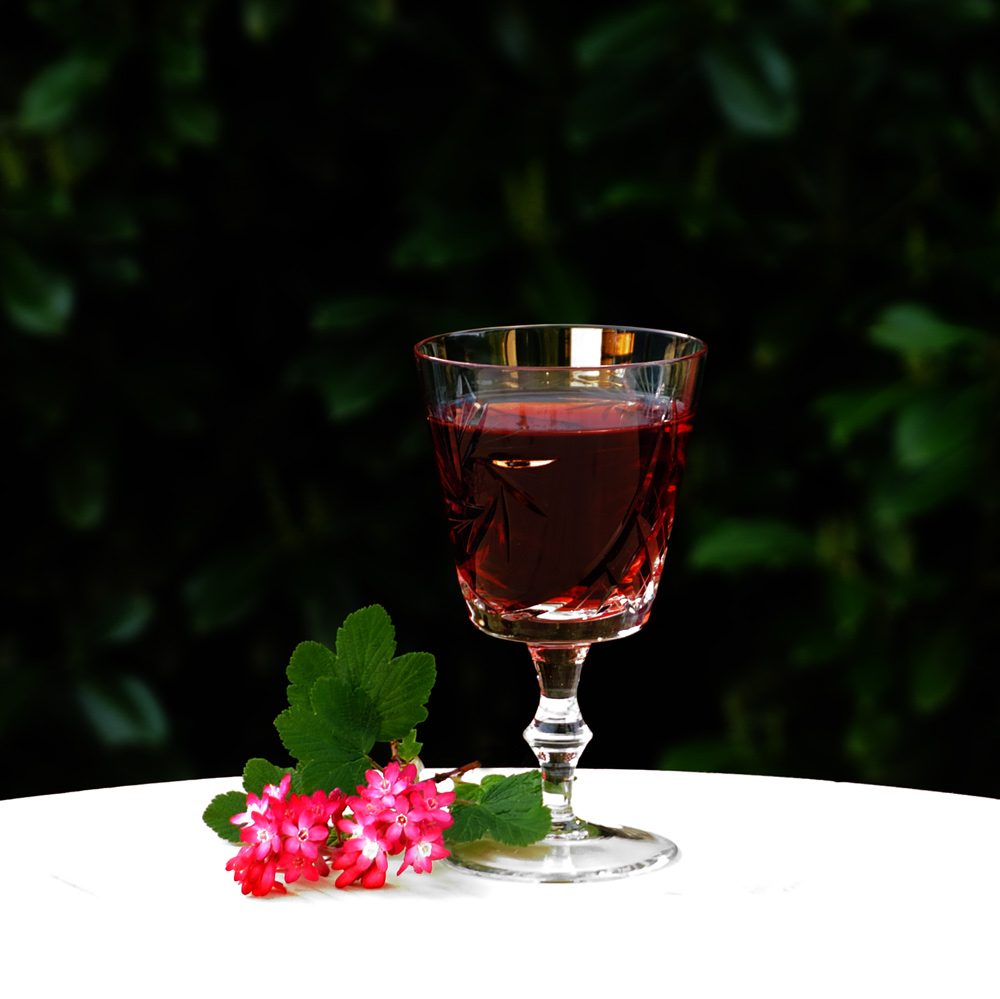
Let’s delve into the world of Burgundy’s offerings once more.
Kir is a cocktail born in Burgundy, crafted from entirely Burgundian ingredients: Aligoté white wine and blackcurrant liqueur known as crème de cassis.
For more details on Aligoté, you can explore here.
Burgundy is renowned not only for its grapes but also for its blackcurrants. When you cultivate berries, it’s only natural to create a liquor from them. For centuries, Burgundy produced blackcurrant liqueur called “ratafia de cassis” (not to be confused with Ratafia de Bourgogne, a fortified wine). However, in 1842, it was replaced by a modern version, crème de cassis.
Crème de cassis is a specialty of Burgundy, but it’s also made in Anjou, England, Luxembourg, Canada (Alberta and Quebec), the USA (Vermont), and Australia (Tasmania). The quality of the liquor depends on the quality and quantity of the berries used. ITG Creme de Cassis de Bourgogne guarantees the Burgundian origin and quality of the berries. They primarily use the elite Noir de Bourgogne variety. Creme de Cassis de Dijon ensures that all berries are from the Dijon commune, using only the Noir de Bourgogne variety. The best producers use 600g of berries per liter of liquor. Liquors labeled as Burgundian or Dijon typically meet this standard.
To make crème de cassis, berries are crushed and soaked in wine spirit, with sugar subsequently added.
Crème de cassis is consumed pure as a digestive, or served as frappe.
It is also a part of cocktails, including very popular ones. The most popular among them is Kir.
The first fusion of Aligoté and crème de cassis took place in 1904 at Café George, 42 Rue de Montchapet, Dijon, thanks to the bartender Faivre. At that time, this cocktail was known as “Cassis Blanc”.
In the 1950s, it was renamed Kir after Canon Felix Kir.
Canon Felix Kir, a Catholic priest, was an active member of the French Resistance during World War II and was awarded the Legion d’honneur. After the war in 1945, he was elected to the French National Assembly and served as the mayor of Dijon, a position to which he was re-elected four times, holding it until his passing.
Canon Kir was a fervent supporter of sister-city initiatives. During his tenure, Dijon became a sister city of York, Dallas, Mainz, Stalingrad, Reggio Emilia, and Meknes. Consequently, many delegations from different countries visited Dijon.
He was also a staunch advocate of local production and promoted it during official delegations, with a particular emphasis on the Cassis Blanc aperitif.
Mid-century, Cassis Blanc gained immense popularity, thanks in no small part to Canon Kir’s influence. Crème de cassis producers approached Kir to seek permission to use his name in advertising their product.
In 1951, Kir officially granted permission to use his name for the promotion of crème de cassis and, primarily, for the Vin Blanc Cassis cocktail.
Cassis Blanc became known as Canon Kir’s aperitif, later Father’s Kir, and eventually just Kir. Today, it is a highly popular cocktail not just in Burgundy but across all of France. It’s even recognized by the International Bartenders Association (IBA) in the Modern Classic category.
Typically, Kir is served as an aperitif.
Aligoté is the ideal choice for Kir, as its high acidity perfectly balances the sweetness of blackcurrant liqueur. If Aligoté isn’t available, Chardonnay (unoaked and from cooler regions) can be used. In fact, Chablis is the second most common wine used for Kir in France after Aligoté. Sauvignon Blanc can also be employed, especially Sancerre with its high minerality and acidity.
The ratio of crème de cassis to wine depends on your preference. The IBA suggests a ratio of 1:10. The classic Burgundian recipe calls for a ratio of 1:5.
Over the years, numerous Kir variants have emerged:
Cardinal: Uses red Burgundy wine (Pinot noir) instead of white wine.
Communard: Features red Beaujolais wine (Gamay) instead of white wine.
Kir Royal: Substitutes Champagne for wine.
Kir Petillant: Utilizes sparkling wine instead of still wine.
Cidre Royal: Replaces wine with cider (with some Calvados added).
Kir Breton: Incorporates Breton cider.
Kir Normand: Features Normandy cider.
Hibiscus Royal: Combines sparkling wine, peach and strawberry liqueurs, and garnishes with a hibiscus flower.
Kir Imperial: Includes crème de framboise or other strawberry liqueur and sparkling wine.
Kir Berrichon: Blends red wine and blackberry liqueur, named after the Berrichon dialect in the Berry province.
Kir Biere or Tarantino: Uses lager or light ale instead of wine.
Kir Pamplemousse: Combines grapefruit liqueur and sparkling wine.
Kir Peche: Features peach liqueur.
Pink Russian: Incorporates milk instead of wine.
The recipe of classic Kir.
Ingredients:
5/6 oz / 45 ml crème de cassis
5 oz / 150 ml Aligoté
Process:
Pour chilled crème de cassis into chilled glass. Top with chilled wine.
Drinkware:
Wine glass
Visit my online store for a unique poster featuring this cocktail, along with many other beautiful cocktails and other wine-related subjects.
It’s the perfect way to add a touch of sophistication to your kitchen or bar. Click here to shop now!